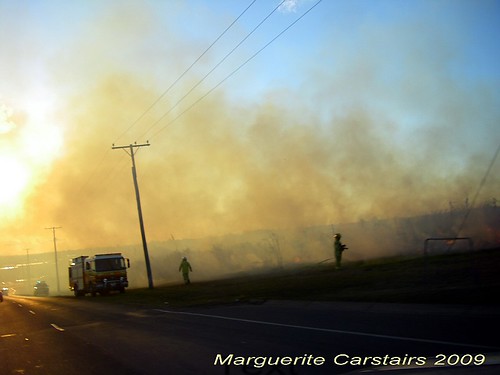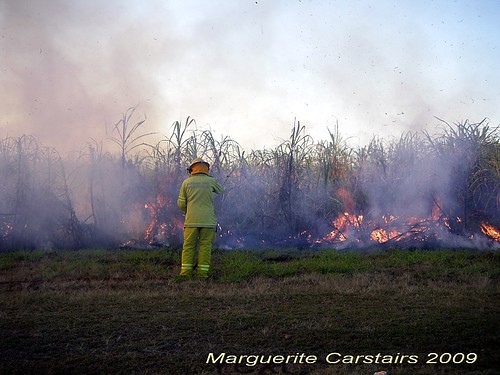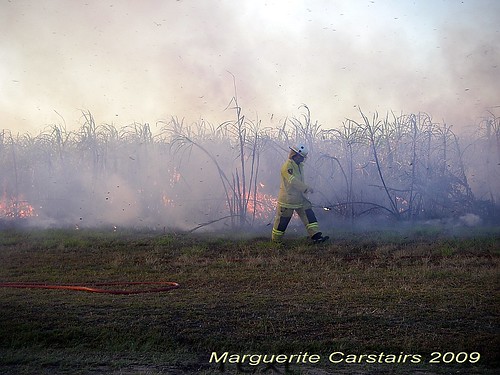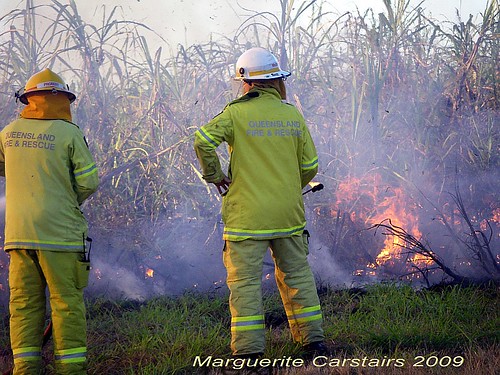

Sugar Cane grows at Hervey Bay, and Maryborough has a huge Sugar Refinery.
Now the cane is ready and it is burnt.
I was driving when I saw the smoke and smelt the sugary scent of the burning cane.
The Fire Resue was in attendance and so were many people with cameras watching the cane burn.
This morning a truck was taking away the cane in a swirl of dust.
The first settlement of Hervey Bay occurred in the 1850s. Hervey Bay was originally part of a cattle station, the Toogoom Run, which was settled in 1854. The first permanent white settler at Hervey Bay was Boyle Martin who, with his wife and child, arrived in 1863. He worked cutting timber and it is suggested that he was the first person to grow sugar cane in the area. By 1859 the first subdivision of land around Hervey Bay took place.
By the 1920’s the area had established strong growth in its primary industries of sugar cane, citrus fruits, beef and fishing.
Sugarcane, or sugar cane, is any of six to thirty-seven species of tall perennial grasses of the genus, Saccharum, (family Poaceae, tribe Andropogoneae). Native to warm temperate to tropical regions of Asia, they have stout, jointed, fibrous stalks that are rich in sugar and measure two to six meters (six to nineteen feet) tall. All sugar cane species interbreed, and the major commercial cultivars are complex hybrids.
Burning cane in preparation for harvest continues to be an integral and essential part of farming operations for the majority of cane growers.
Under the Queensland Fire and Rescue Service Act 1990, special provisions apply to the burning of sugarcane, tops and trash in those situations where a grower's Cane Production Area (CPA) is bordered on every side by other cane land.



140x45.jpg)




No comments:
Post a Comment